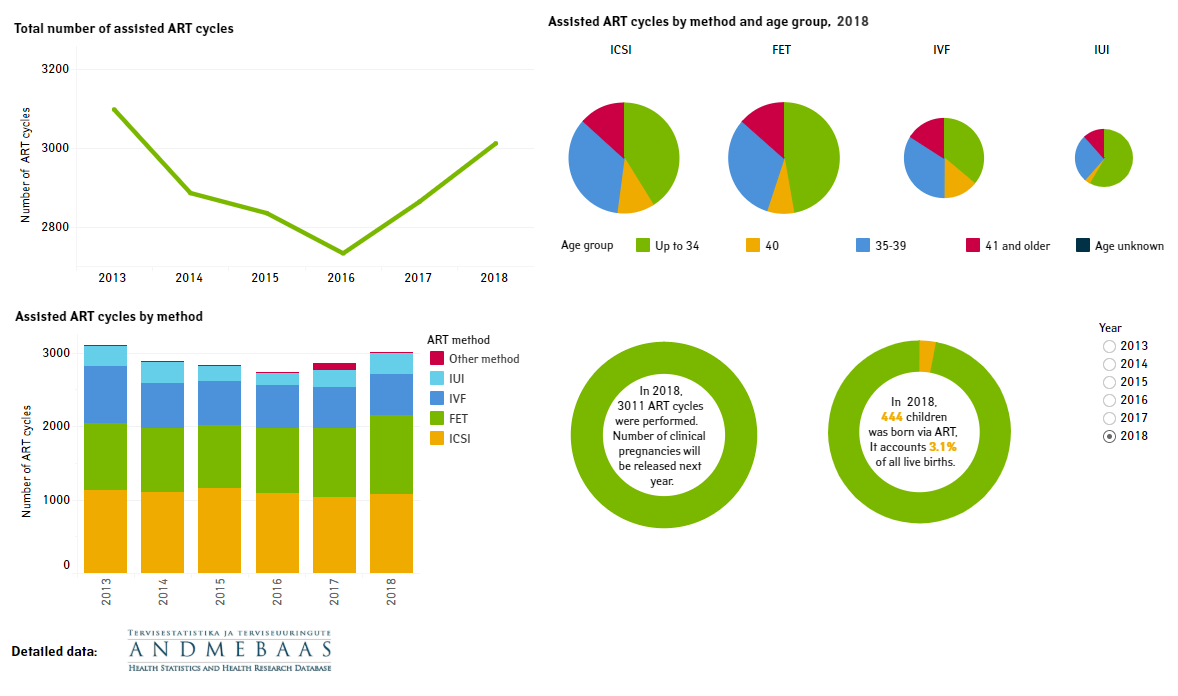Estonian State Agency of Medicines data shows 3011 assisted reproductive technology (ART) cycle procedures in 2018, having increased by 5% compared to 2017. In 2014–2016, the number of ART cycles decreased, while since 2017, the ART cycles are again increasing.
In 2018, most frequently used ART method was frozen embryo transfer (FET) and intracytoplasmic sperm injection (ICSI) – both 36% of all ART cycles. ICSI method is used in case of sever male infertility. Intrauterine insemination (IUI) was the method least used, representing only 10 % of all ART cycles.
Compared to the year 2017, the use of IUI method (25%) increased the most. This is the procedure where sperm is placed directly in the woman’s womb with a special catheter. IUI is performed for male infertility problems or female infertility due to cervical issues. The costs of this method are not covered by state.
In 2018, FET and ICSI are the most frequently used methods in all age groups. Infertility treatment increased most among 40-year-old women (27%) and treatments decreased among 41 and older women. Infertility treatment is most commonly used among two younger age groups – 34-year-old and younger women and 35–39-year-old women. Almost half of the ART cycles were performed for age group 34 and younger.
Until 2016, two embryos were most frequently transferred during one procedure. Since 2017, this trend changed and the most common was the single embryo transplantation. In 2018, the single embryo transplantation has increased 20% compared to the previous year. The number of transferred embryos and zygotes increased about 2% compared to 2017.
In 2018, state spending on infertility treatment services was 2.481 million euros, having increased by 4 % compared to 2017.
In 2017, artificial inseminations ended with 890 clinical pregnancy, which is 30% of performed ART cycles. In most cases, partner donation was used (83%) following the usage of donor egg (7%) and donor sperm (7%). ART side effects occurred in 10 patients.
In 2018, 444 children were born via artificial insemination in Estonia according to Estonian Medical Birth Registry. This is 14 children more than in 2017 and it accounts 3% of all live births.
Detailed data have been published in the statistical database (see tables KV10–KV14) and visualized data can be found here:

